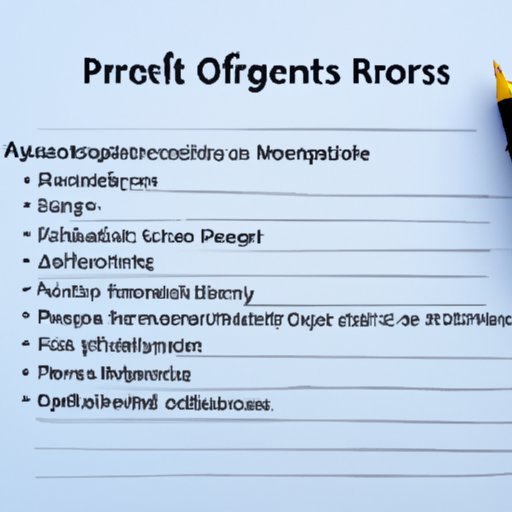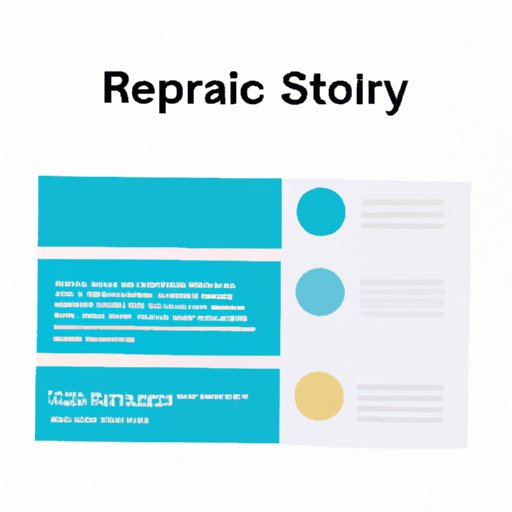Introduction
A report is a document that presents facts and data in an organized manner for a specific purpose or audience. Reports are used by organizations, businesses, and individuals to communicate important information and make decisions. They can range from a simple memo to a detailed analysis of a complex issue. The goal of this article is to provide an in-depth guide on how to start a report.

Outlining the Purpose and Objectives of the Report
The first step in starting a report is to outline the purpose and objectives. This helps to define the scope of the report and identify what questions need to be answered. It is also important to set a timeline for completion of the report. This will ensure that the report is completed in a timely manner and that all necessary information is included.

Gathering Relevant Data and Information
Once the purpose and objectives of the report have been identified, the next step is to gather relevant data and information. Sources of data may include surveys, interviews, observations, and secondary research. It is important to use reliable sources and to assess the quality of the data. Data collection methods such as questionnaires, focus groups, and case studies should also be considered.

Analyzing the Data and Drawing Conclusions
After the data has been collected, it must be analyzed in order to draw conclusions. The right tools should be used to analyze the data, such as statistical analysis software or spreadsheets. Once the data has been analyzed, the results should be interpreted and conclusions drawn based on the data. This will help to answer the main questions identified in the outline.
Writing an Introduction
The introduction of the report should introduce the topic of the report and explain the purpose and objectives. It should also present the main findings and recommendations. This will give the reader an overview of the report and prepare them for the information that follows.
Constructing the Body of the Report
The body of the report should be organized logically and written in a clear, concise manner. Sections should be structured for easy reading. All relevant data and information should be included in the body of the report.
Summarizing the Key Findings and Providing Recommendations
The report should end with a summary of the key findings and recommendations. This should include a summary of the main points and suggestions for further action. It is also important to revisit the purpose and objectives of the report to ensure that they were met.
Conclusion
Starting a report can seem overwhelming, but it doesn’t have to be. By outlining the purpose and objectives, gathering relevant data and information, analyzing the data, writing an introduction, constructing the body of the report, summarizing key findings and providing recommendations, you can create a comprehensive and effective report.
(Note: Is this article not meeting your expectations? Do you have knowledge or insights to share? Unlock new opportunities and expand your reach by joining our authors team. Click Registration to join us and share your expertise with our readers.)
